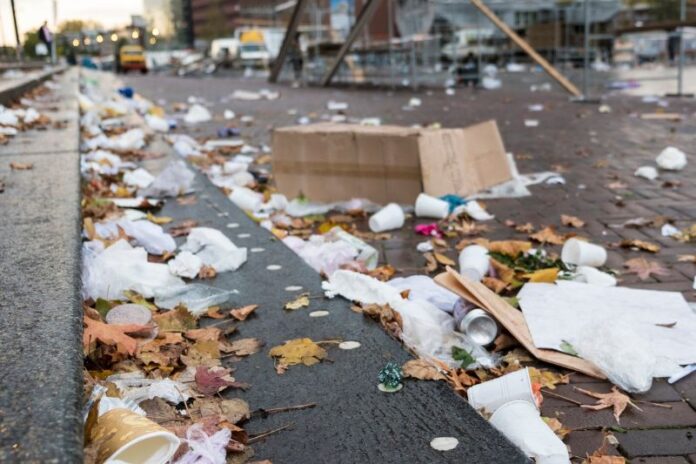A report on criminal law published last month by the International Commission of Jurists in collaboration with the United Nations, could easily serve as a handbook for the looting, filth, and general lawlessness now infecting many U.S. cities, including San Francisco, Chicago, and New York.
Typical of virtually every report drafted by the United Nations and related international organizations, this one was long in the drafting, taking a full five years to compose. Also, like other U.N.-created reports, it has a ridiculously long and convoluted title: The 8 March Principles for a Human Rights-Based Approach to Criminal Law Proscribing Conduct Associated with Sex, Reproduction, Drug Use, HIV, Homelessness and Poverty. A shorter and more accurate title would be How To Destroy Civil Society By Abandoning the Rule of Law.
Central to the Report’s thesis is the notion that a society’s criminal laws must in every instance yield to and be secondary to “human rights.” In this approach, no criminal law should be permitted to “restrict the exercise of any human right” unless such a law is itself “consistent with other rights recognized under international human rights law.” To cement this circular thesis, the Report declares that if there might ever arise any question about the reach of a country’s criminal law, it must never be construed “to an accused person’s disadvantage.”
To further undercut any legal system that might still employ a criminal code, the Report asserts that “international law” trumps any system of “domestic law,” which would include, for example, our Constitution. And, borrowing a phrase employed often by liberals here in the United States to justify whatever “rights” they desire to paint with a constitutional patina, this latest U.N.-endorsed Report declares that the human rights code on which it is based must be considered a “living document.”
If the reader can wend his or her way through the repetitive declarations about the evils of criminal laws and the primacy of international “human rights,” they still have to seek the assistance of a dictionary to discern the meaning of such words and phrases as “heteronormative,” “non-exploitative surrogacy,” and “non-derogable,” inserted to disguise the Report’s vacuity.
However, if the reader does emerge au courant from the Report’s initial 13 “Principles of Criminal Law,” he or she quickly discovers why the Report is likely in the future to be found on the desks of the many woke, George Soros-supported district attorneys and their compatriot mayors, such as those in Chicago, Philadelphia, and New York, who coddle rather than punish lawbreakers.
The remaining eight “principles” in the Report are a laundry list of public policies designed to ensure a filthy and crime-ridden – but “equitable” –environment such as we are seeing infect many Democrat-led cities today. For example:
- “Custodial sentences” (jail) is to be used only “as a measure of last resort.”
- Abortion, or, as the Report terms the practice, “pregnancy loss,” must not be limited to any degree.
- “Consensual sex” cannot be criminalized, regardless of the age of the participants because an individual “below the domestically prescribed minimum age of consent” who engages in some form of sex, might in fact “be consensual.” In such a libertine society, pederasty would be considered a “human right” and therefore beyond the reach of domestic criminal law.
- There would be no drug laws, even for minors under the age of 18.
- Prostitution, pimping, and houses of prostitution likewise could not be criminalized or restricted.
- Finally, if the above-enumerated “principles” and listing of legally permissible activities were insufficient to obliterate any remaining semblance of civil society, the international “jurists” authoring this Report conclude that no activity undertaken by an individual out of necessity could be prohibited, including panhandling, sleeping or bathing in public, or “urinating and defecating” in public places – all examples of protected “human rights.”
The society thus emerging would be filthy, chaotic, dangerous, and lawless . . . come to think of it, a bit like today’s San Francisco, Chicago, and New York.





























